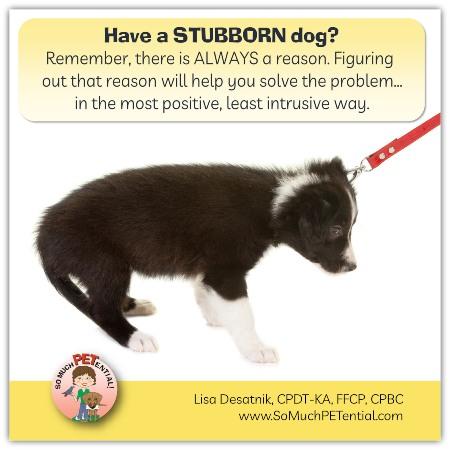Teaching Recall to a Stubborn Dog: A Journey of Patience and Persistence
Every dog owner knows the thrill of watching their furry companion sprint across an open field, tail wagging and ears flapping in the wind. Yet, for many, this joy is often overshadowed by the challenge of getting that same exuberant pup to return on command. Introducing the world of recall training—an essential skill that can transform reckless romps into harmonious adventures. Particularly for those spirited, headstrong canines who seem to embrace the motto of “I’ll come back when I want to!”—teaching recall requires not only a deep understanding of canine behavior but also a healthy dose of patience and creativity. In this article, we will explore effective strategies and insights that can help turn a stubborn dog into a reliable partner, ensuring that the beauty of exploration is always accompanied by the reassurance of a returning hug. Join us as we embark on this rewarding journey, where every successful recall becomes a celebration of connection and trust between you and your beloved dog.
Table of Contents
- Understanding Canine Behavior: The Psychology Behind Stubbornness
- Crafting the Perfect Environment: Setting the Stage for Recall Training
- Positive Reinforcement Techniques: Motivating Your Dog to Respond
- Practical Training Drills: Step-by-Step Exercises for Success
- Q&A
- The Conclusion
Understanding Canine Behavior: The Psychology Behind Stubbornness
Understanding why dogs exhibit stubborn behavior is key to successfully teaching them recall. Often, what we perceive as stubbornness is rooted in a dog’s individual personality and past experiences. For example, a dog that has not received consistent training might simply be unsure about what is expected of them. Additionally, different breeds can exhibit varying levels of independence, which might be interpreted as stubbornness. A positive reinforcement approach can greatly influence your dog’s willingness to listen, as dogs are more likely to comply when they see a direct benefit for themselves.
Consistency is crucial in mitigating stubbornness during recall training. Here are some strategies to enhance your training sessions:
- Use high-value treats: Find what your dog loves most, whether it’s a favorite toy or a special treat.
- Stay patient: Allow your dog time to process commands without harsh correction.
- Practice in low-distraction environments: Gradually increase distractions as your dog improves.
Here’s a quick glimpse of common dog behaviors that can resemble stubbornness:
| Behavior | Possible Reason |
|---|---|
| Ignoring commands | Uncertainty or distraction |
| Refusing to come | Testing boundaries or independence |
| Focusing on surroundings | Natural curiosity or socialization needs |
Crafting the Perfect Environment: Setting the Stage for Recall Training
Creating the ideal atmosphere for recall training is essential, especially when working with a stubborn canine companion. Start by choosing a quiet, distraction-free space where your dog feels comfortable. This could be your backyard, a local park during off-peak hours, or even a spacious indoor area. Gradually introduce them to the environment, ensuring they feel secure and at ease. To enhance the experience, consider the following:
- Control the environment: Limit noise and distractions by training at times when other dogs and people are less likely to be present.
- Familiar scents: Incorporate items that carry familiar scents, like their favorite blanket or toy, to provide a sense of home.
- Positive reinforcement: Use treats or toys they love, ensuring they view training as a fun activity.
Next, think about the layout of your training area. Having a predictable setup can help your dog understand the expectations. Here are some aspects to consider:
| Element | Impact |
|---|---|
| Clear boundaries | Enables your dog to focus without feeling overwhelmed. |
| Safe play zones | Encourages exploration and builds confidence during training. |
| Visual markers | Helps your dog associate training locations with positive outcomes. |
By thoughtfully orchestrating your dog’s surroundings, you pave the way for successful recall training, setting the stage for enthusiastic participation and effective learning.
Positive Reinforcement Techniques: Motivating Your Dog to Respond
When working with a stubborn dog, employing positive reinforcement can work wonders in nurturing a responsive and obedient companion. The essence of this technique lies in rewarding desired behaviors immediately to strengthen the bond of trust between you and your furry friend. Start by selecting high-value treats that your dog absolutely loves, such as small pieces of chicken, cheddar cheese, or even their favorite toy. Use these rewards generously during training sessions to create a motivating environment. Make sure to maintain enthusiasm in your voice and use energetic body language to capture your dog’s attention and make learning fun.
Create a structured training plan that incorporates varied lengths of recall training sessions. Here are some effective tips to make your training sessions engaging:
- Short Sessions: Keep training sessions between 5-10 minutes, ensuring your dog remains focused.
- Controlled Environment: Begin in a distraction-free area before gradually introducing more stimuli to the mix.
- Use a Release Command: Clearly signal the end of each session with a consistent phrase, helping your dog understand when training is complete.
- Consistency is Key: Regular practice is crucial—aim for daily reinforcement to solidify the recall command.
| Time of Day | Type of Training | Reward |
|---|---|---|
| Morning | Basic Recall in Yard | High-Value Treats |
| Afternoon | Leash Recall in Park | Favorite Toy |
| Evening | Free Recall with Distractions | Praise & Extra Playtime |
Practical Training Drills: Step-by-Step Exercises for Success
To effectively teach recall to a stubborn dog, it’s crucial to employ engaging drills that capture their attention. Start with short, fun sessions in a distraction-free environment to establish a strong foundation. Use the following steps:
- Choose a high-value treat: Select something your dog absolutely loves to ensure they are motivated.
- Begin with a leash: Attach a leash to maintain control initially, especially in an open space.
- Call your dog: Use a cheerful tone to say their name followed by “come,” and reward them as they approach.
- Gradually increase distance: As your dog becomes more responsive, slowly extend the distance before calling them.
Once your dog masters basic recall indoors, start introducing distractions. Engage them in a familiar environment with some ambient noise. Use the following strategies to keep your stubborn dog focused:
| Strategy | Purpose |
|---|---|
| Practice with friends | To simulate distractions and ensure your dog remains attentive. |
| Use toys for distractions | To teach your dog to prioritize your recall command over their chasing instincts. |
| Add movement | Running away from your dog encourages them to chase you, reinforcing the recall behavior. |
Q&A
Q&A: Teaching Recall to a Stubborn Dog
Q: Why might my dog be considered stubborn when it comes to recall?
A: Dogs often display what we interpret as stubbornness due to a lack of motivation or understanding of the command. Factors such as distractions in the environment, lack of positive reinforcement, or even an independent personality can all contribute to their seemingly obstinate behavior.
Q: What are some effective ways to motivate a stubborn dog to come when called?
A: Motivation is key! Experiment with high-value treats, toys, or praise that truly excites your dog. You might find that a specific squeaky toy or piece of chicken is more enticing than regular kibble. Additionally, establishing a playful association with the recall command can make it more appealing.
Q: How should I start teaching my dog recall?
A: Begin in a distraction-free environment, like your home or a quiet backyard. Choose a clear recall command, such as “come” or “here.” Start by getting your dog’s attention, then use the chosen command while rewarding them immediately for coming to you. Gradually increase the distance as they become more reliable.
Q: What role does positive reinforcement play in training recall?
A: Positive reinforcement strengthens the behavior you want to encourage. Rewarding your dog every time they respond correctly reinforces the association between the command and the behavior, making them more likely to repeat it. Over time, the motivation to come when called will grow stronger.
Q: How can I manage distractions while training recall?
A: To manage distractions, begin in a controlled environment where you can gradually introduce distractions. Start by practicing with a friend or family member present—if they can distract the dog, call them back before the dog gets too distracted. You can slowly work your way towards more challenging environments, like parks, as your dog improves.
Q: Are there any common mistakes I should avoid during recall training?
A: Yes! Avoid using the recall command to call your dog for negative experiences, like bath time or taking away their favorite toy. This can create a negative association with the command. Also, ensure you never punish your dog for not coming; instead, focus on making it a positive experience.
Q: How can I maintain consistent recall training over time?
A: Consistency is essential. Practice regularly in different environments and circumstances. Engage your dog in recall games, like hide-and-seek, to keep the learning process fun and varied. The more consistently you reinforce recall, the more reliable your dog will become.
Q: When can I expect to see results from my training efforts?
A: Patience is crucial! Depending on your dog’s personality and prior experiences, it may take anywhere from a few weeks to several months to establish consistent recall. Progress may vary, so celebrate small victories along the way and adjust your training methods as needed.
Q: What should I do if my dog still doesn’t respond to recall training?
A: If you find yourself struggling, consider seeking professional help from a dog trainer. They can provide tailored guidance and support to help address specific challenges you are facing. Remember, every dog learns at their own pace, and it’s essential to remain persistent and positive!
The Conclusion
teaching recall to a stubborn dog may feel like an uphill battle at times, but with patience, consistency, and a sprinkle of creativity, you can transform your four-legged friend into a reliable partner on your adventures. Remember, every pup has its own unique personality, and what works for one may not work for another. Celebrate the small victories along the way, and don’t be afraid to adapt your strategies to suit your dog’s needs. Ultimately, building a strong bond based on trust and respect will pave the way for successful training sessions. So grab those treats, embrace the process, and enjoy the journey of reinforcing the connection between you and your furry companion. A little determination goes a long way, and before you know it, your stubborn pup will be racing back to you, tail wagging, ready to share in all of life’s adventures.



